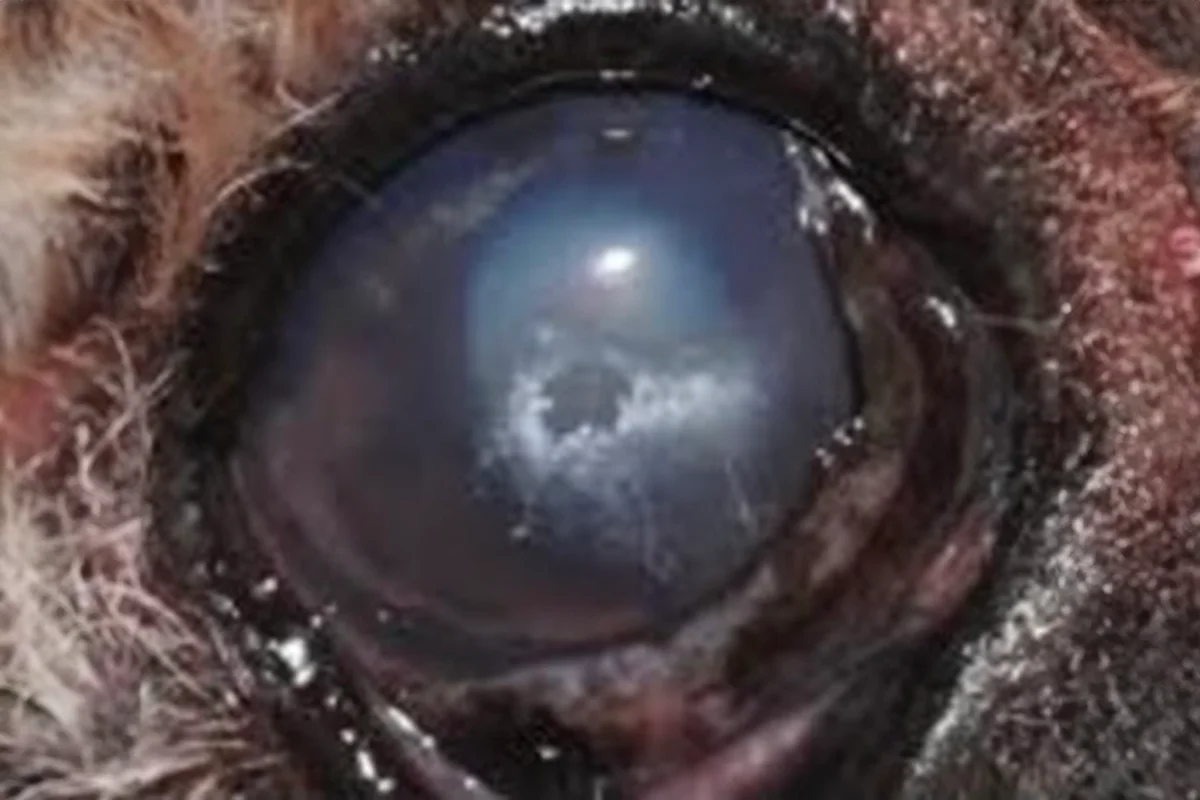Pet Corneal Mineral Deposits in Spring, TX
With expert diagnosis and treatment, North Houston Veterinary Ophthalmology conducts comprehensive care for pet corneal mineral deposits in Spring, TX.

Corneal Mineral Deposits
Understanding Corneal Mineral Deposits
This condition can be seen alone or in combination with lipid corneal deposits. It appears as white opacities on the corneal surface and tend to be more superficial as compared to lipid deposits. These deposits still often create irritation in pets, and excessive scratching or rubbing at the eyes are also common symptoms.

Clinical Signs of Corneal Mineral Deposits
Recognizing the Symptoms
In pets with corneal deposits, the mineral deposits are irritating to the pet, so it is common for corneal inflammation and redness to be associated with this condition. Also, it is common for pieces of the mineral deposits to slough, leaving a painful ulcer behind which is often very slow to heal. Due to the discomfort, squinting is another common symptom associated with this condition. Sometimes these ulcers become deep necessitating a grafting procedure to save the eye and prevent corneal rupture.
Causes of Corneal Mineral Deposits
Corneal mineral deposits may occur secondary to a systemic illness or it can be spontaneous, meaning it develops secondary to corneal inflammation. The systemic illnesses that can cause corneal mineral deposits include elevated blood levels of calcium or phosphorous, Cushing’s disease, uremia, and elevated levels of Vitamin D. Corneal mineral deposits can also be seen concurrently with lipid keratopathy when corneal inflammation is present.
Treatment Options for Corneal Mineral Deposits
Managing Corneal Mineral Deposits
Corneal mineral deposits can be mild and self limiting or it can result in deep corneal ulceration which puts the eye at risk of rupture. Therapy is based on the condition of the eye and can range from medical therapy to surgical intervention.
Why Choose North Houston Veterinary Ophthalmology?
North Houston Veterinary Ophthalmology specializes in treating pet eye conditions like corneal mineral deposits. In advanced cases or cases with corneal ulceration, a procedure called a diamond burr keratoplasty or a surgical procedure called a superficial keratectomy are typically recommended to remove or at least minimize the deposits to aid in improving the comfort of the pet. Dr. Sankey and our compassionate team are dedicated to ensuring your pet’s overall well being through comprehensive diagnostics and a treatment plan tailored to your pet’s unique needs.
Schedule a Consultation Today
If your pet shows signs of corneal mineral deposits, schedule a consultation with our team at North Houston Veterinary Ophthalmology. Early diagnosis and intervention can help manage the condition effectively and ensure your pet maintains a good quality of life.
Contact us today to learn more about our services and how we can assist with your pet’s eye health. At North Houston Veterinary Ophthalmology, we are dedicated to providing the highest standard of care for pets with corneal mineral deposits.